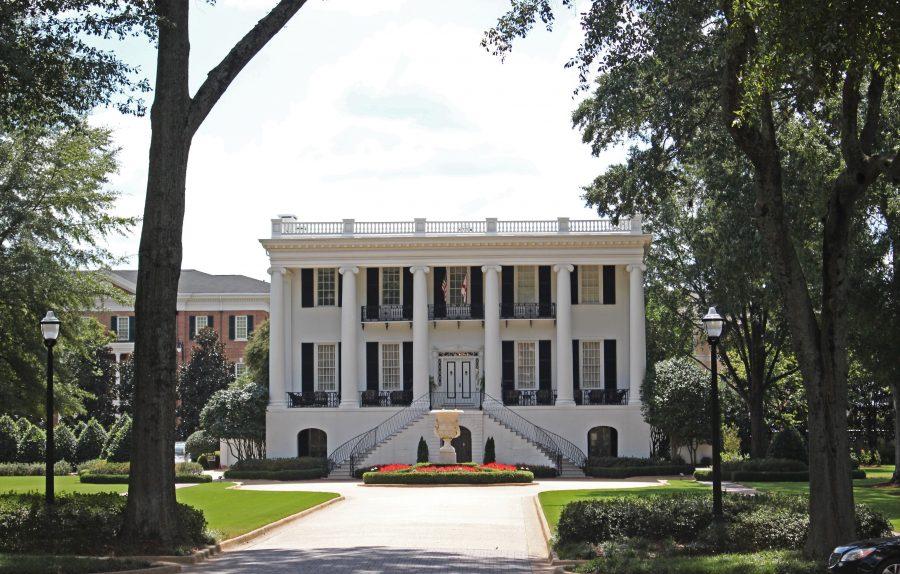Every building on the University’s campus has a past – sometimes a dark one. Even the President’s mansion, which has housed every UA President for 150 years is full of stories.
The mansion was completed in 1841, and the University’s second president, Basil Manly, Sr. was the first to live in the building, followed by Landon Garland. Both men owned slaves who stayed in the quarters behind the mansion. These structures are still standing today.
Hilary Green, an assistant professor for the department of Gender and Race Studies said there are four buildings located behind the mansion. The one closest to Farrah Hall was the well and washroom, the building directly behind the mansion was the kitchen where enslaved women would cook the house’s meals, and the two on the outside of the kitchen were quarters.
“Many students know about Mrs. Garland and her servants,” Green said. “I don’t think they realize that they were enslaved servants. They’re usually labeled as garden sheds, but originally they weren’t. So it’s naturalized that they have always been storage.”
Before the Civil War, both Manly and Garland personally owned the slaves who worked in the house as servants. As one of the University’s oldest buildings on campus, the mansion is a stop on the official tour of the campus. However, Green said this history is often lost because it isn’t being shared.
“On the tour it’s not really told,” Green said. “You have to acknowledge both sides, especially the enslaved that were not named.”
Elisa Tidmore, a senior majoring in criminal justice and an Alabama native, said she believes there are a lot of topics on campus that need to be acknowledged.
“In high school I was the president our of Southern Belles, and during that time I had the opportunity to visit a lot of historical houses,” Tidmore said. “It helped inform me a lot, and it’s good to know those things. There are a lot of buildings like that here in Tuscaloosa like the Gorgas House. All of the mansion’s history should be included when it’s discussed because it’s a apart of our history [as Alabamians] and a part of our campuses history.”
Green said the mansion today is not what it was years ago, renovations have been done over time.
“We see it as always looking the way it does, even though it’s had two significant renovations,” Green said. “The outer buildings are still there, so they were never removed, and there was opportunity to remove them. It’s still being preserved and that is unique that we have both on our campus.”
Despite the knowledge of the slaves’ quarters, not a lot of other information has been shared as to why the buildings continue to stand.
“Why were the slave quarters kept,” Green said. “That’s something I’m still trying to figure out, because with the renovations, those things could have come down. But like the mansion they were preserved.”









